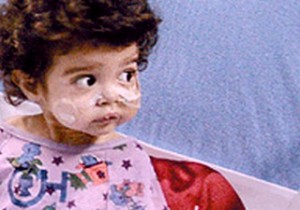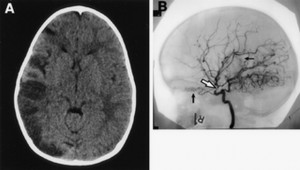Alagille syndrome is categorized as an inherited physical condition wherein the affected individual experience less than usual bile ducts situated with the liver. Bile ducts are also referred to as hepatic ducts. These are tubes that are responsible for transporting bile from the liver cell towards the cholecyst, commonly known as gall bladder, and later transport it into the intestine.
Bile can be described as liquid produced in the liver that is responsible for two major purposes. They play an important role in evacuating toxin as well as waste out of the body; they also help in digesting fats as well as fat soluble vitamins such as Vitamin A, Vitamin D, Vitamin E and Vitamin K. The lesser number of hepatic duct results in accumulation of the bile in the liver which may cause liver damages. If not treated timely the condition may progress and liver transplant may become mandatory.
Agile syndrome is a physical issue which is said to be complex disorder that can also affect other body parts such as kidney, capillaries, heart, eyes and skeleton, etc. This physical condition is recorded once in 70,000 births and affects male and female equally irrespective of the gender. Symptoms associated with this malady are commonly experienced during the first and second year of life.
Causes of Alagille Syndrome:
Alegille syndrome is described as inherited disorder, in simpler terms it is a hereditary disorder. It is transmitted through autosomal dominant type of inheritance. In this kind of inheritance either of the parents passes on the disorder to the child. A child with parent carrying the disorder is 50% prone to the malady. The disorder is passed from parent to child through JAG1 or Jagged 1 gene which is mutated or defective causing the issue. However, in approximatel;y one percent cases it is also recorded that the affected individuals also had mutate NOTCH2 gene.
Symptoms of Alagille Syndrome:
It should be known that are several symptoms associated with this condition; however, the symptoms and signs may vary from person to person even in the same family. Some of the common symptoms of Alagille syndrome are explained here:
Liver related symptoms:
There are some liver related symptoms experienced under such condition, which may include poor drainage of bile as well as liver disease. Such condition may be experienced during first few weeks from the onset of the disease.
Some other symptoms may include:
• Jaundice
• Pruritus (itchy sensation due to bilirubin built up in blood)
• Malabsorption that may also cause diarrhea
• Xanthomas (fatty accumulation on skin)
• Growth related problems
Unique symptoms of Alagille syndrome:
• Narrowing of pulmonary arteries leading to heart related problems
• Many children with prevalence of alagille syndrome have unusual face features such as deep- set eyes, significantly straight nose, prominently pointed chin and wider forehead disproportionate to the face.
• Abnormal skeleton, specially the spine
• Kidney relate abnormalities
• Back up of blood flow in spleen
• Issues relates to blood vessels such as carotid arteries
The aforementioned are some of the symptoms that may indicate prevalence of Alagille syndrome.
Diagnosis of Alagille syndrome:
There are several diagnoses that may help in determining the prevalence of the physical issues some of these tests may include:
• Blood tests
• Ultrasound test of abdomen
• Biopsy of liver
• Cardiology test for checking heart issues
• Posterior embryotoxon examination
• X- ray
• Kidney tests
• Blood vessel examination
These are some important tests that may help in understanding about the occurrence of Alagille syndrome. It is important to remember that if any of the symptoms, as mentioned, is experienced one should undergo immediate diagnosis followed by treatment.
Alagille Syndrome Pictures
Treatment for Alagille syndrome:
Alagille syndrome treatment usually focuses on increasing the bile flow from the liver enhancing growth and development. This also provides comfort to the affected individual. There is only one drug yet approved by the Food and Drug Administration or FDA for treatment of Alagille issues; this drug is Ursodiol (Actigall, Urso). This drug is found to be efficient in enhancing the bile flow. Apart from this medication, other treatments adopted for alagille syndrome are focused on alleviating symptoms of the disorder.
In case of Pruritus developed due to the condition can be alleviated through the aforementioned medication as the conditions improves with increased bile flow. However, other way to soothe Pruritus is by taking medications such as cholestyramine, rifampin, antihistamine and naltrexone etc. Moreover, it may be beneficial to rehydrate or moisturize skin through appropriate moisturizers. One should also avoid scratching the skin as it may result in further damages, even if you desire top scratch then ensure your nails are well trimmed to avoid harm.
If the person suffers from symptom such as malabsorption, doctors may suggest high calorie diet, supplements of calcium, vitamin A, vitamin D, vitamin E and Vitamin K etc. In case of infants, there are special formulas that allow them to absorb nutrients appropriately.
If pruritus is progressed to a severe stage then and other treatments do not help, then you have to undergo PEBD treatment or Partial External Biliary Diversion, which may help in providing some relief to the affected individual. This treatment is a surgical procedure wherein an end of the small intestine is connected to the gall bladder and the other opening of the intestine is connected to the opening in abdomen known as stoma. Through this opening the bile is evacuated from body and is accumulated in a pouch. In case the condition is even severe and cannot be cured through PEBD as well, then liver transplant is the only way to avoid further adverse consequences. Even if liver fails to function transplant is suggested when other treatment techniques do not work.
Before performing transplant, the health care experts analyze and evaluate the benefits and risk chances of the transplant procedure and discuss it with the patient or/ and patient’s family members. Only after approval from the patient or family the procedure is performed on the patient. It should be known that patient with Alagille syndrome along with heart disease are not qualified for the procedure as it may lead to complication during the surgical operation.

